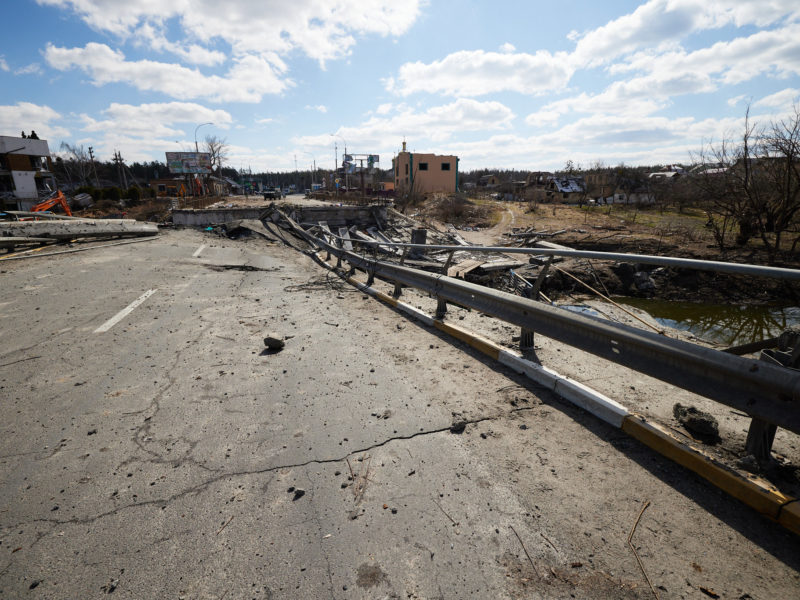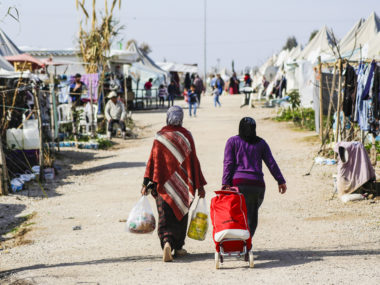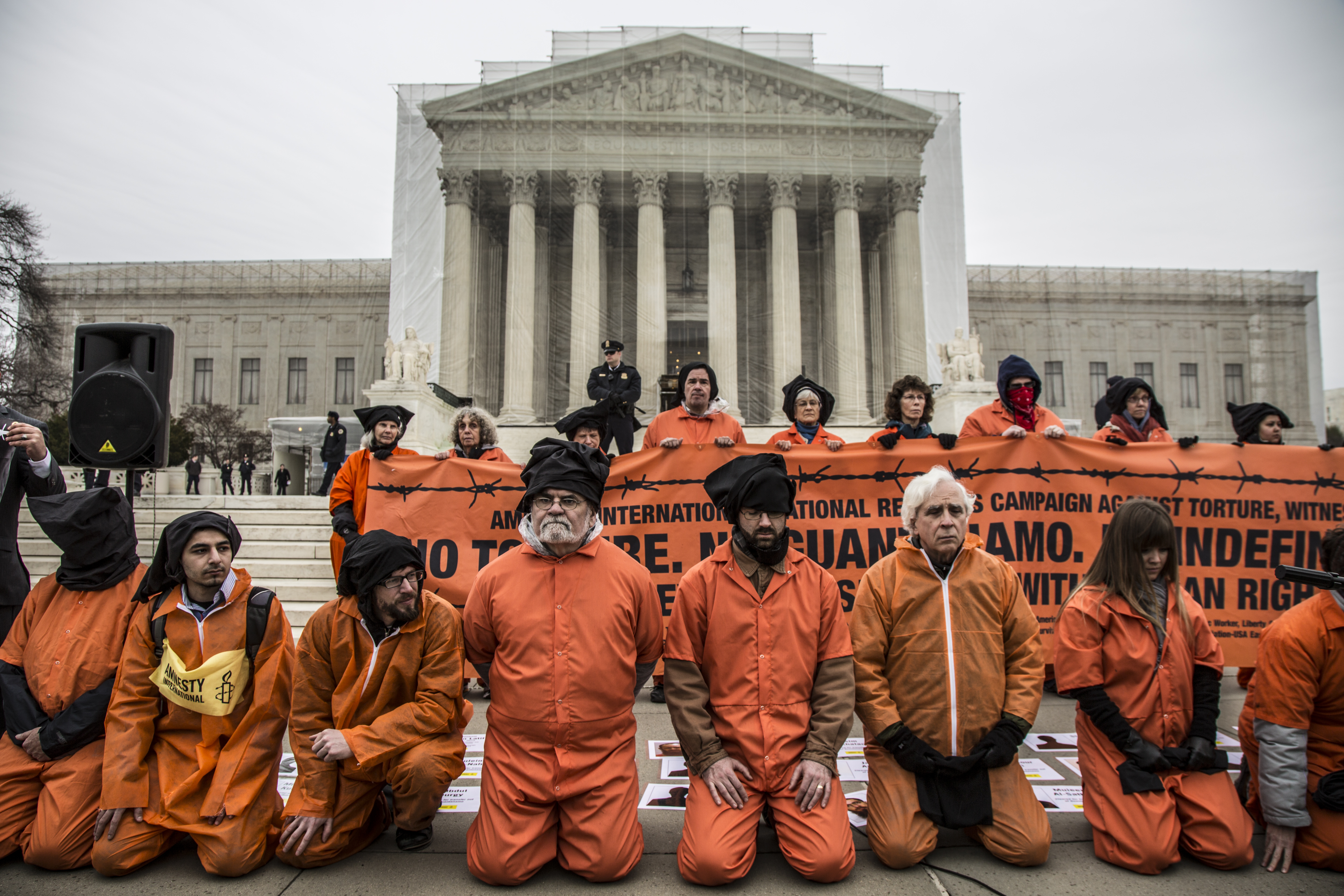The city of Bucha, outside Kyiv, witnessed one of the worst atrocities in the early weeks of Russia’s invasion of Ukraine. Images and video from the town confirmed reports of a massacre in which Russian forces are alleged to have killed more than 1,000 civilians. The massacre attracted the attention of US President Joe Biden, who decried the event and called for Russian President Vladimir Putin to stand trial for war crimes.
Violence against civilians by Russian forces goes beyond Bucha, however. Amnesty International collected evidence of civilian deaths in the form of extrajudicial killings around the Kyiv region, including the execution of the mayor of Hostomel. Civilians have met similar fates in Russia’s more recent assault on the Donbas, though reports are murky, as captured territory largely remains under Russian control. What explains the targeting of civilians in Ukraine?
The mayor of Bucha, Anatoly Fedoruk, suggested that at least some of the killings are the result of Ukrainian civilian cooperation with Russian troops. He pointed to Ukrainian civilians who passed to Russian troops “the names and addresses of pro-Ukrainian activists and officials in the city.” Fedoruk claims to have seen lists of people targeted for execution, indicating that Russians “knew in advance” whom to kill. In Kharkiv, the Ukrainian regional government reported similar collaboration: civilians handed Russian troops lists of locals associated with the military or with personal wealth.
These allegations are consistent with research on civilian behavior in conflict. Stathis Kalyvas argues that territorial control in civil conflict leads to higher levels of civilian collaboration with occupying forces. Occupiers seek to stamp out resistance to their rule—creating what one refugee from Kherson called a Russian “state-imposed reality”—and welcome civilian assistance to achieve this objective. The more territory the occupiers control, the more likely local residents are to collaborate, since this reduces the risks that collaborators will face retaliation. The result is a stream of denunciations revealing the identities and locations of individuals who oppose the occupiers.
What motivates collaborators? While some may be driven by old grudges or sympathy for occupiers, Laia Balcells, who studies conventional civil war in Spain, contends that local elites use violence to achieve their political goals. They do this by harnessing the occupier’s security forces to eliminate political rivals. Incentives to eliminate rivals are particularly strong when political competition is close and the denunciation of just a handful of high-profile targets could swing the balance of power. Occupiers likewise want to eliminate their collaborators’ political rivals, as this deepens their territorial control. In the Ukrainian city of Melitopol, Russian forces and local collaborators jointly targeted “elected officials, activists, business owners—anyone seen as influential or capable of shaping local opinion.” Russian occupiers and collaborators’ shared goals in Ukraine include changing education to reverse “Ukrainianization” in regions of the country with deeper cultural and historical ties to Russia. The rapid adoption of a pro-Russian curriculum in occupied schools speaks to the centrality of this goal to Putin’s regime.
The pattern in Ukraine of political rivalries, denunciations, and killings can occur in any conflict, creating a sudden shift in territorial and political control from one regime to another. For example, my forthcoming study in World Politics shows that there were more political killings after Chile’s 1973 military coup in areas with close electoral competition. Jeffrey Kopstein and Jason Wittenberg find that, as Nazi German troops gained control of eastern Poland in 1941, local communities were more likely to carry out pogroms against Jews where there was greater political polarization between Jewish and non-Jewish populations. Civilians, in other words, collaborate with security forces to eliminate threats to a new political order in all kinds of places—and have done so for a long time.
Ukrainian civilians are exploiting Russia’s occupation to advance their own political objectives, going so far as to condemn their neighbors to death. In doing so, they are following in a long line of wartime collaboration, where, as Matthew Kocher, Adria Lawrence, and Nuno Monteiro write in reference to Nazi German occupation of France, “military occupation creates incentives to leverage the occupier’s power for domestic advantage by offering willing collaboration.”
What should be done about civilian contributions to wartime violence? When reliable data on killings behind Ukraine’s front lines become available, scholars and policymakers should investigate the relationship between civilians’ incentives to collaborate with Russian forces and the frequency of killings. Doing so would help policymakers understand how to reduce civilian deaths by creating peacetime conditions less favorable to denunciations of political rivals. The unintended consequence of reduced denunciations, however, could be that occupying forces lacking information on political targets from local civilians instead resort to indiscriminate killings.
Revenge and reprisals are other consequences for policymakers to consider. When territory reverted to its original status in the Spanish Civil War, Balcells finds that revenge killings occurred in areas with higher levels of violence during the occupation. This concern exists in Ukraine as well: experts warn that “Ukrainian vigilante groups could try to seek revenge or accountability for Russian atrocities and war crimes” in areas formerly under Russian control. Promoting the rule of law and due process for civilian collaborators in areas Ukraine recaptures could halt a potential spiral of violence.







